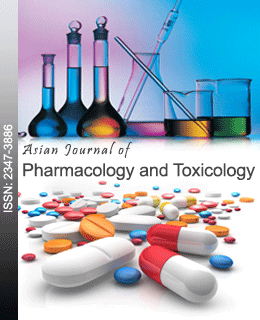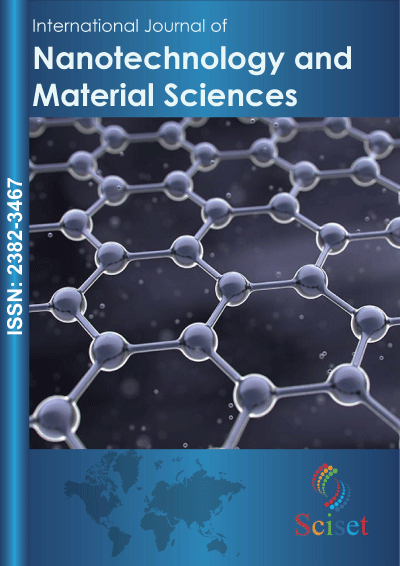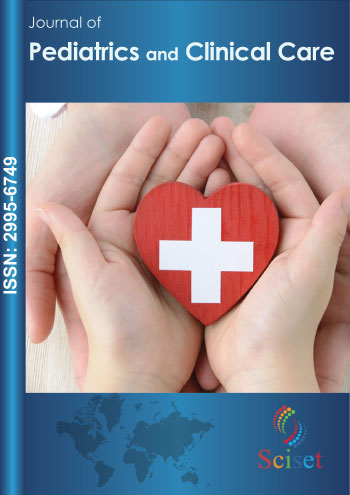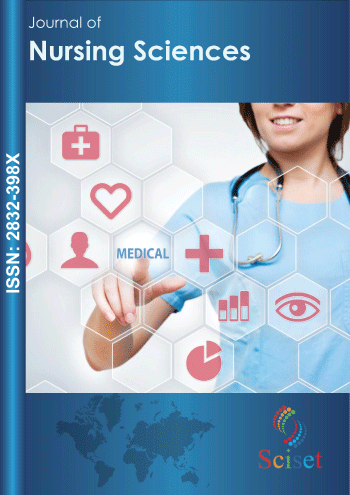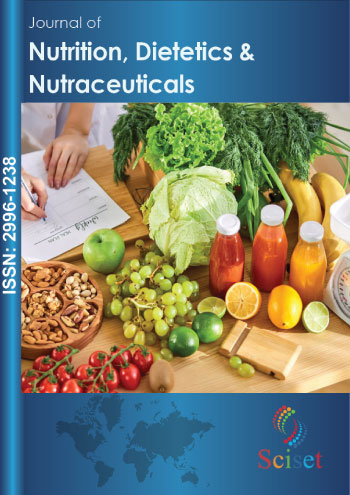- Open-Access Publishing
- Quality and Potential Expertise
- Flexible Online Submission
- Affordable Publication Charges
- Expertise Editorial Board Members
- 3 Week Fast-track Peer Review
- Global Visibility of Published Articles
Paper Submission Guidelines
AUTHOR GUIDELINES:
We accept Editorial, Research, Case Report, Review, Opinion, Short Communication, Mini Review, Letter to Editors articles for publishing with us.
Covering Letter
Author need to submit a cover letter before submitting the manuscript and it should follow the following information
- Contribution for the research work should be summarized
- Relation between new and previously published work should be established
- Relation between new and previously published work should be established
- Describe any prior interactions with Publisher regarding the submitted manuscript
- Suggest the editors to handle the manuscript
- Specify the reviewers name that you oppose
Manuscript Standards
- File format: We accept all DOC, PDF, RTF, or DOCX formats. Microsoft Word documents should not be locked or protected.
- Length: There is no restriction in manuscript length or word count, number of figures and supporting information. We encourage you to present and discuss your findings concisely.
- Font : standard font and font size
- Headings : Limit manuscript sections and sub-sections to 3 heading levels
- Layout: Manuscript text should be double-spaced.
- Footnotes : Footnotes are not permitted
- Language : Manuscripts must be submitted in English
- Abbreviations: Define abbreviations upon first appearance in the text. Do not use non-standard abbreviations unless they appear at least three times in the text. Keep abbreviations to a minimum
- Nomenclature : Use correct and established nomenclature wherever possible
- Units of measurement: Use SI units. If you do not use these exclusively, provide the SI value in parentheses after each value
- Drugs : Provide the Recommended International Non-Proprietary Name
- Species names: Write in italics (Write out in full the genus and species, both in the title of the manuscript and at the first mention of an organism in a paper. After first mention, the first letter of the genus name followed by the full species name may be used (e.g., H. sapiens).)
- Genes, mutations, genotypes, and alleles: Write in italics. Use the recommended name by consulting the appropriate genetic nomenclature database
Manuscript Organization:
- The manuscript should follow the following standard instruction for each element appears below.
We are organizing the manuscript in to 4 sections - Section I: Title page (Title, authors, and affiliations), Abstract, Introduction
- Section II: Materials and Methods, Discussion, Results, Conclusions
- Section III: Acknowledgments, References and Supporting Information Captions (if applicable)
- Section IV: Figure captions are inserted immediately after the first paragraph in which the figure is cited. Figure files are uploaded separately.
- Tables are inserted immediately after the first paragraph in which they are cited.
- Supporting information files are uploaded separately.
Manuscript Title:
Submitted manuscript should follow the following criteria:
- Title should be in Title Case (except articles, conjunctions and prepositions)
Title should not exceed 250 character length - Specific, Precise, Descriptive and intelligible to readers outside the sphere.
- Try to avoid Special characters like abbreviations for clinical Trials, reviews and meta-analyses abstract should include study design.
Author:
After Title write author names on the Title page and Authors are separated by comma and last name should be followed by conjunction ‘and’ On the title page, write author names in the following order:
- First name (or initials, if used)
- Middle name (or initials, if used)
- Last name (surname, family name)
- Each author need to mention affiliation and it includes university, department or organizational information and its address including country name. If an author has multiple affiliations, enter all affiliations on the title page only.
Corresponding author:
Corresponding author should be marked with asterisk (*) symbol.
One corresponding author should be designated in the submission system. However, this does not restrict the number of corresponding authors that may be listed on the article in the event of publication.
E-mail address for each corresponding author should be included in the Title Page of the Manuscript.
If there is author group on manuscript, please provide a note that describes where the full membership list is available for the readers.
Membership list can be listed in the Acknowledgments, in Supporting Information, or on the internet.
Group authorship:
If manuscript is submitted on behalf of organization or research group, include the consortium or group name in the author list, and include the full list of members in the Acknowledgments or in a Supporting Information file.
The corresponding author is responsible for making sure all authors approve the final manuscript before submission. Publisher will contact all authors by email at submission to ensure that they are aware of the submission.
Author names will be published exactly as they appear in the accepted manuscript.
Indicate affiliations by number only.
Affiliation footnotes should appear in numerical order at first mention. Please use the symbols provided in this document for other designations.
Numbers and symbols should be in superscript.
Do not include titles (Dr, PhD, Professor, etc.).
Affiliations:
Affiliations will be published as they appear in the accepted manuscript. Include each component in order of small to large (Department, Division, Section, Institution, City, State, and Country).
Do not include ZIP or Postal Codes, street addresses, or building/office numbers.
Do not use abbreviations (e.g. Dept.).
Do not list positions within an institution (e.g. Department Chair, Professor, etc.).
List each affiliation individually and in full.
Partials:
Paper is using partials folder to inject some common html files like header and footer.
Symbol | Name | Definition |
¶ | Pilcrow (paragraph symbol) | 1st set of equal contributors |
& | Ampersand | 2nd set of equal contributors |
* | Asterisk | sadasd |
#a | Pound/number sign | First Current address |
#b | Pound/number sign | Second Current address |
† | Dagger/Cross | Deceased |
^ | Caret | Consortium/Group Authorship |
Authors:
John Doe1¶, Antonie Data1¶, Johannes van Stats1,#a, Marie Testperson2*, David Ribosome Jr.3,5, Gregory H.T. McBio4,#b , Angela Reviewerson1,2&, Marina Measure1&, on behalf of The Bunny Genome Sequencing Consortium^
Affiliations:
1 Department, Institution, City, State, Country
2 Department of Dermatology, Division of Rabbit Health, Section of Veterinary Medicine, St. Hare Hospital, San Francisco, California, United States of America
3 Department of Libraries and Archives, National Contemporary Bunny Museum, Lagomorph, Connecticut, United States of America
4 Department of Restoration, National Contemporary Bunny Museum, Lagomorph, Connecticut, United States of America
5 Department of Archaeology, Bunny University, Lagomorph, Connecticut, United States of America
#a Current Address: Department of Carrot Science, Bunny University, Lagomorph, Connecticut, United States of America
#b Current Address: Department of Canine Evasion, Bunny University, Lagomorph, Connecticut, United States of America
* Corresponding author E-mail: james@university.ed (MT)
¶ These authors contributed equally to this work.
& these authors also contributed equally to this work.
^ Membership of the Bunny Genome Sequencing Consortium is provided in the Acknowledgments.
Abstract will appear after the Title Page on the manuscript and abstract should follow the following criteria for submission:
- It should not exceed 300 words
- It should be descriptive along with the Objective of the study
- Explain study and model used without methodological details
- Summarization of results
- It should not include citations and abbreviations (If possible)
Introduction
The introduction should:
- Introduction should be in to context and allow readers to know the aim and significance of the study.
- Define the issues mentioned and why it is important
- Include a short review of the key literature
- Note any controversies within the scope of the research
- Brief description about overall objective and aim of the work and comment
- Conclusion about the overall work and comments about whether that aim was achieved
Materials and Methods:
In this section author should provide sufficient information to allow suitably skilled investigators to fully replicate your study. Guidelines and protocols for new methods should be explained in detail. If protocols and standard methods are well established, author needs to cite these articles properly in detail, but the submission should be include sufficient information to be understood independent of these references. In this section.
Brief Information should be provided in this section to allow other investigators to repeat brief but sufficient to allow other investigators to repeat the research
References should be mentioned wherever possible procedures appear
All organizations and individuals from where the materials are gathered should be listed
If any manuscript presents only theory in that case we can omit Materials and Method Section.
Websites that providing tutorial, personal or laboratory material are omitted from the articles.
None of the Materials and Methods may be placed in Supplemental Materials.
Units like International Standard unit system (SI System) and temperature in degrees Celsius should be implemented in the entire manuscript.
Results:
Results should provide all the content which supports the conclusion of the article.
In this section details of all experimental findings which are required to support the conclusion of the manuscript.
There is no limit for result section but content should not detract from the focus of the manuscript.
Content in this section should be written in past tense.
Results can be divided in to sub sections and content should be concise.
Experimental findings should be clear but succinctly the experimental findings
Acknowledgments
Those who contributed to the work but do not meet our authorship criteria should be listed in the Acknowledgments with a description of the contribution.
Authors are responsible for ensuring that anyone named in the Acknowledgments agrees to be named.
Results, Discussion, Conclusions
The above mentioned sections can be separate or combined to produce mixed section. This section further can be divided in to subsections. This section doesn’t have any word limit but the content should be clear and accurate.
Together, these sections should describe the results of the experiments, the interpretation of these results, and the conclusions that can be drawn.
Authors should explain how the results relate to the hypothesis presented as the basis of the study and provide a succinct explanation of the implications of the findings, particularly in relation to previous related studies and potential future directions for research.
References
All research work available within the scope of the manuscript can be cited in the reference section. The acceptable work can be published in reference section from the following sources
Published or accepted manuscripts
Manuscripts on pre-print servers, if the manuscript is submitted to a journal and also publicly available as a pre-print
Do not cite the following sources in the reference list:
Unpublished work and manuscripts which are under review or u published work.
Instead, include those data as supplementary material or deposit the data in a publicly available database.
Personal communication data should be supported by a letter from the relevant authors. It should not include in the references.
References are published in the end of manuscript and order should be maintained as per text reference number in the bracket (citations).
Do not include citations in abstracts or author summaries.
Make sure the parts of the manuscript are in the correct order before ordering the citations.
Supporting Information:
Author needs to submit all supporting information including images or figures, tables, charts, graphs and other multimedia files. All these files subject to peer review process and are submitted along with manuscript and are not more than 10 MB in size.
Supporting files should be publication-ready, as they are not copyedited.
File format: We accept all DOC, PDF, RTF, or DOCX formats. Microsoft Word documents should not be locked or protected.
Length: There is no restriction in manuscript length or word count, number of figures and supporting information. We encourage you to present and discuss your findings concisely.
Font: standard font and font size
Headings: Limit manuscript se

